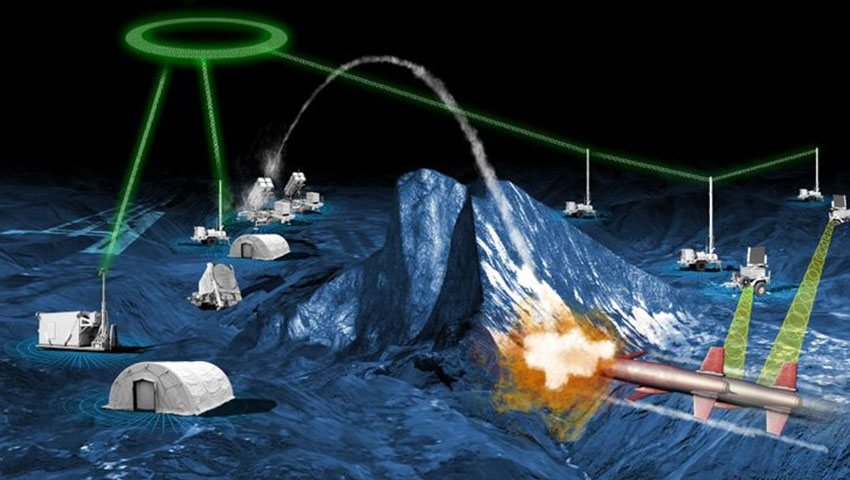The US Army and Northrop Grumman have successfully conducted simultaneous engagement of two incoming target cruise missiles during a flight test using the Army’s Integrated Air and Missile Defense (IAMD) Battle Command System (IBCS) – providing interesting insights for Australia’s AIR 6500 program.
To continue reading the rest of this article, please log in.
Create free account to get unlimited news articles and more!
Including Sentinel, Patriot and Marine TPS-59 radars and Patriot Advanced Capability-2 (PAC-2) Guidance Enhanced Missile-TBM (GEM-T) interceptors, the test demonstrated successful interoperability and the end-to-end performance of the IBCS system to detect, track and simultaneously engage multiple threats.
Dan Verwiel, vice president and general manager, missile defense and protective systems, Northrop Grumman, said, "Building on the success of the most recent flight test this past August, today’s test demonstrates that IBCS is achieving unprecedented performance in defeating multiple missile threats.
"Taking advantage of all available resources in the battlefield, IBCS enhances battlefield survivability by enabling 360-degree sensor coverage, and enables highest probability of defeat by ensuring the most effective weapon is used to intercept each threat."
Designed to emulate potential real-world events, the flight test began when two cruise missile surrogate threats were launched. The cruise missiles flew in a manoeuvring formation until they neared their targets, and then split off to attack two separate defended assets.
IBCS fused data from the various participating sensors and external networks into accurate composite tracks of both threats. Then it developed the engagement plan employed by the soldiers to successfully launch two PAC-2 missiles and intercept both cruise missile targets.
The test was conducted at White Sands Missile Range, New Mexico, by a test detachment of soldiers from the 30th Brigade 3rd Battalion 6th Air Defense Artillery Regiment who manned the workstations and executed the engagement plan presented by IBCS.
The friendly forces defence laydown consisted of a battalion, two battery IBCS engagement operations centres, a Patriot radar, two Sentinel radars and two PAC-2 launchers. Also contributing to the test were a US Marine Corps AN/TPS-59 joint radar connected to an external Link 16 network and F-35 fighter aircraft with sensors adapted to IBCS. All these systems were connected to the IBCS Integrated Fire Control Network (IFCN).
Major General Rob Rasch, Army Program Executive Officer, Missiles and Space, explained the importance of the interoperability between the various US military branches: "Today's successful flight test further demonstrates the maturity of the Integrated Battle Command System and its capabilities in support of multi-domain operations.
"The inclusion of Marine Corps and Air Force sensor systems in the test architecture validate the system's open architecture and the potential for IBCS to operate seamlessly with joint services, as well as foreign partners in the future, to extend battlespace and defeat complex threats."
Brigadier General Brian Gibson, Army Futures Command and director of the Air and Missile Defense Cross Functional Team, reinforced this: "IBCS is the Army's number one air and missile defence priority and will fundamentally change our air and missile defence force and capability, maximising the combination of sensors and shooters in a completely different way than ever before."
IBCS is the cornerstone of the Army’s IAMD modernisation program. Designed to connect the force for unified action against evolving threats, IBCS is a net-centric command and control system for the air and missile defence mission.
IBCS enhances battlefield survivability by creating a resilient self-healing network of all available sensors that can reduce and eliminate vectors of attack while providing operators with a single integrated air picture of unprecedented accuracy and expanded area of protection.
IBCS is managed by the US Army Program Executive Office for Missiles and Space, Redstone Arsenal, Alabama.
Northrop Grumman is a leading global security company providing innovative systems, products and solutions in autonomous systems, cyber, C4ISR, space, strike, and logistics and modernisation to customers worldwide.

 Login
Login







